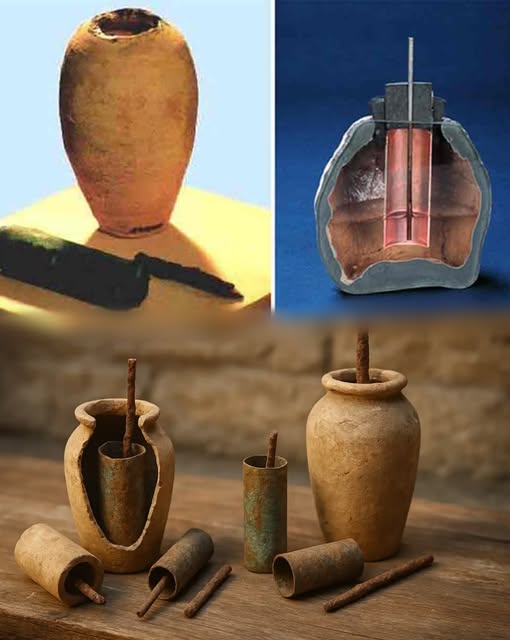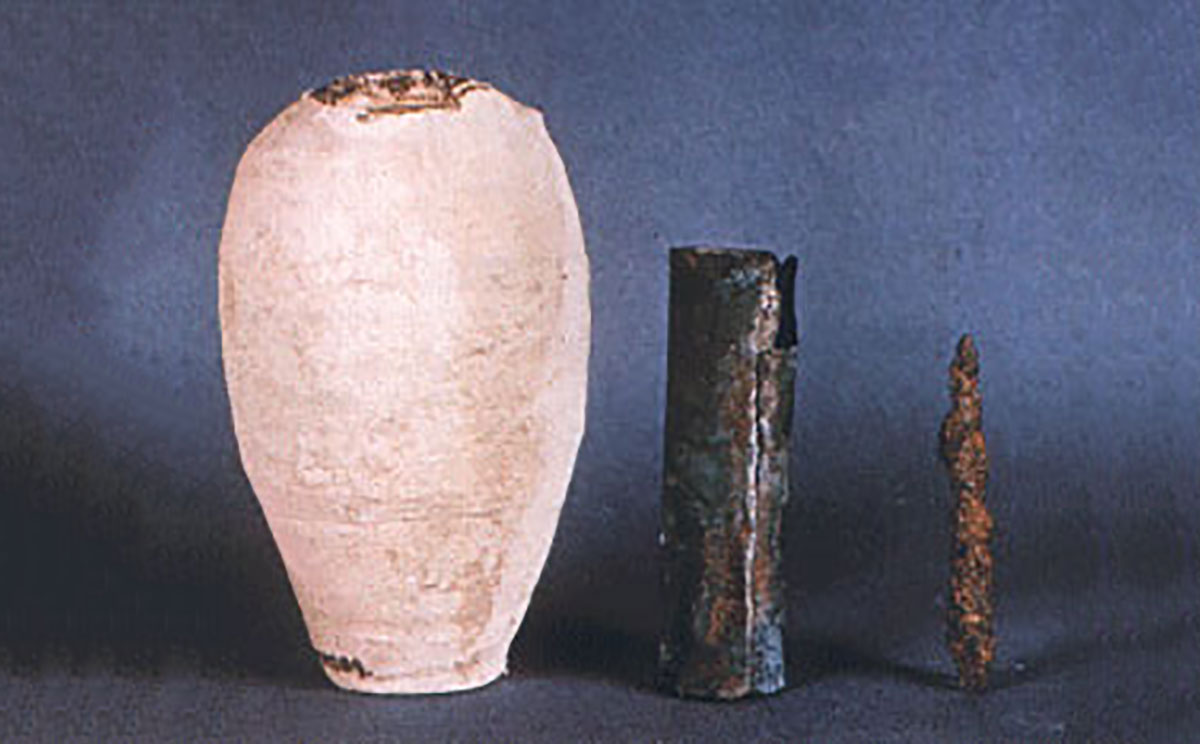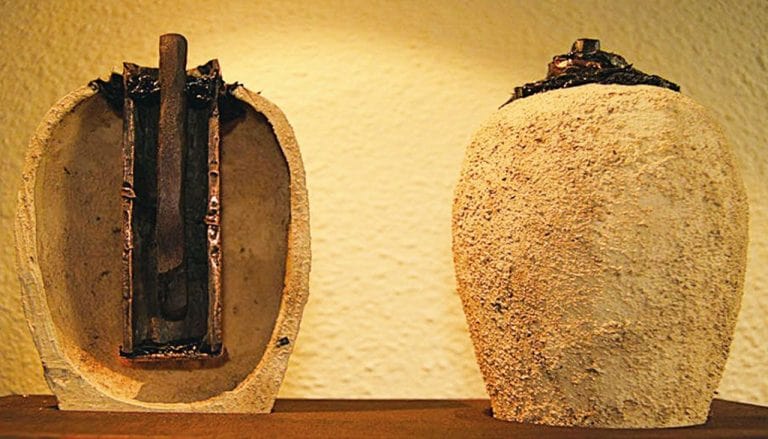The Mystery of the Bagdad Battery – An Ancient Electric Mystery?
- ManhAn
- June 19, 2025

Related Movies:
Related Movies:
Related Movies:
The Mystery of the Baghdad Battery: An Ancient Electric Enigma?
In the world of ancient artifacts, few have sparked as much debate as the Baghdad Battery. Discovered in modern-day Iraq, this peculiar object, dating back to approximately 250 BC, has intrigued both archaeologists and scientists for decades. It is often touted as an ancient example of what some believe to be an early galvanic cell, potentially capable of generating electricity. But is this merely an artifact of advanced ancient technology, or is there another explanation behind its creation and purpose? While the idea that the Mesopotamians understood and harnessed electricity remains controversial, the Baghdad Battery continues to capture the imagination of those fascinated by ancient civilizations and their supposed technological prowess.

The Discovery of the Baghdad Battery
The Baghdad Battery was discovered in the 1930s in the vicinity of modern-day Baghdad, Iraq, near the site of ancient Ctesiphon. Ctesiphon was the capital of the Parthian Empire and a major center of trade and culture in the ancient world. The artifact, which consists of a clay jar, a copper cylinder, and an iron rod, immediately drew the attention of archaeologists and historians due to its unusual construction.
The jar itself is about six inches tall, and its interior contains a copper tube wrapped around an iron rod. The combination of copper and iron in close proximity, when submerged in an electrolyte solution, has the potential to create a small electrical current—just like the galvanic cells used in modern batteries. The presence of such materials in this seemingly simple container has led some to theorize that the Baghdad Battery may have been used as an early form of electric battery. However, this theory has been met with skepticism by many in the scientific community.
What Is a Galvanic Cell?
Before delving further into the mystery of the Baghdad Battery, it’s important to understand the concept of a galvanic cell. A galvanic cell is an electrochemical device that generates electricity through a chemical reaction between two different metals in the presence of an electrolyte. The most common modern example of this technology is the battery, where chemical reactions between the metals and the electrolyte produce electrical energy.
In the case of the Baghdad Battery, the copper tube and the iron rod would have acted as the two electrodes, while the electrolyte—likely an acidic solution like vinegar or wine—would have been contained within the clay jar. This combination, when set up in the correct manner, could theoretically have produced a small amount of electrical charge, similar to how a modern-day battery works. The question is: could the ancient Mesopotamians have understood this concept of electricity and deliberately created a device capable of generating it?

The Theories Behind the Baghdad Battery
The idea that the Baghdad Battery was an early form of an electric battery is not universally accepted. Most archaeologists and historians dismiss this theory, citing a lack of definitive evidence to suggest that the ancient Mesopotamians had any knowledge of electricity. However, the possibility remains tantalizing. A number of theories have been put forth regarding what the Baghdad Battery may have been used for, beyond its potential role as a primitive battery.
1. Electroplating Theory
One of the most popular theories surrounding the Baghdad Battery is that it may have been used for electroplating, a process in which a thin layer of metal is deposited onto a surface using an electrical current. Electroplating was first developed in the 19th century, but some have speculated that ancient civilizations, such as the Mesopotamians, may have stumbled upon a method to achieve a rudimentary form of electroplating. If the Baghdad Battery was capable of generating a small electrical charge, it is possible that it could have been used to coat objects, such as jewelry or religious artifacts, with a thin layer of precious metal like gold or silver. The process would have involved submerging the object to be plated into a solution containing metal ions and using the electrical current generated by the Baghdad Battery to deposit the metal onto the object.

2. Medicinal Uses
Another theory proposes that the Baghdad Battery may have been used for medicinal purposes. Ancient civilizations often utilized electrical phenomena for healing, though they did not understand electricity as we do today. The Greeks, for example, used electric fish to treat ailments such as headaches and joint pain. The Baghdad Battery could have been used in a similar manner, either to deliver a mild electric shock for therapeutic reasons or to treat conditions like pain and inflammation. While there is no direct evidence to support this theory, it is plausible that the ancient Mesopotamians, who were highly skilled in medicine and healing practices, might have used electrical devices for therapeutic purposes.
3. Religious or Ritualistic Use
Given the highly spiritual and religious nature of ancient Mesopotamian society, some scholars have suggested that the Baghdad Battery may have had a ritualistic or religious purpose. The Mesopotamians were known to conduct elaborate religious ceremonies and rituals, many of which involved the use of symbolic objects and artifacts. The Baghdad Battery may have been used in these ceremonies, potentially as part of a ritual offering or as a tool for invoking divine powers. The presence of electricity, even in a small form, could have been perceived as a divine or mystical force, and its use in religious rituals would not have been unusual in the context of ancient belief systems.
4. A Tool for Light
Another theory is that the Baghdad Battery might have been used as a primitive form of electric light. Some researchers have speculated that the battery could have been used to power a small lamp or source of light, possibly in conjunction with other materials such as copper wires or glass. While there is no direct evidence for this, the idea that ancient civilizations might have developed a form of electric lighting is intriguing. It is important to note, however, that this theory faces significant skepticism due to the lack of supporting archaeological evidence and the fact that electric lighting, as we understand it, requires a much more complex system of power generation than a single galvanic cell.

The Skeptical Viewpoint
Despite the fascinating nature of these theories, most scientists remain skeptical about the idea that the Baghdad Battery was used to generate electricity in the way we understand it today. Several factors complicate the case for the Baghdad Battery as a genuine ancient electrical device:
-
Lack of Evidence: There is no clear evidence that the ancient Mesopotamians had any understanding of electricity or electrical currents. While they were advanced in many areas, such as mathematics, astronomy, and engineering, there is no documented proof that they had any knowledge of electrochemical processes.
-
Functionality: While it is possible that the Baghdad Battery could generate a small amount of electricity, the amount produced would have been very minimal and unlikely to serve any practical purpose beyond electroplating or other similar applications. The battery would not have been capable of powering devices or performing tasks that require a larger electrical current.
-
Alternative Explanations: Some scholars argue that the Baghdad Battery may not have been a functional object at all, but rather an ornamental or symbolic item. The copper and iron components may have been used for other purposes, such as decoration or as part of a ritualistic object, rather than as a functional battery.

Conclusion: An Ancient Enigma
The Baghdad Battery remains one of the most intriguing and mysterious artifacts from the ancient world. While the idea that it was used to generate electricity is highly controversial, the possibilities it raises continue to fascinate historians and archaeologists. Whether it was used for electroplating, medicinal purposes, religious rituals, or simply as a decorative item, the Baghdad Battery stands as a testament to the ingenuity and resourcefulness of the ancient Mesopotamians.
As we continue to unravel the mysteries of ancient civilizations, the Baghdad Battery will undoubtedly remain a subject of debate, speculation, and fascination. While we may never fully understand its purpose or the extent of the knowledge possessed by the people who created it, the Baghdad Battery serves as a reminder that the ancient world was filled with wonder and secrets that continue to captivate our imagination.
#BagdadBattery #AncientElectricity











